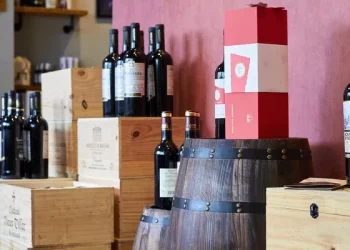Merlot is a red grape variety that is used to make some of the world’s most popular wines. Merlot wines are known for their softness, fruitiness, and easy drinking qualities. If you’re a wine enthusiast who wants to know more about how Merlot is made, here is a step-by-step guide to the winemaking process:
Step 1: Harvesting
- Merlot grapes are harvested in the fall when they have reached their full ripeness.
- The grapes are hand-picked or machine harvested, depending on the vineyard’s preference.
- The grapes are sorted to remove any unwanted grapes, leaves, or stems.
Step 2: Crushing and Destemming
- The grapes are then crushed to extract the juice and create a must.
- The must is then destemmed to remove the stems and create a smoother texture.
Step 3: Fermentation
- Yeast is added to the must to initiate fermentation.
- The fermentation process converts sugar in the must into alcohol.
- The temperature is carefully monitored to ensure that it is within the optimal range for the yeast to work effectively.
Step 4: Pressing
- Once fermentation is complete, the wine is pressed to separate the solids (grape skins, seeds, and stems) from the liquid (wine).
- This process can be done using a manual press or a mechanized one.
Step 5: Aging
- The wine is then transferred to oak barrels for aging.
- The oak barrels add flavors of vanilla and spice to the wine.
- The wine is aged for several months to several years, depending on the winemaker’s preference.
Step 6: Bottling
- After aging, the wine is then bottled and corked.
- Some winemakers choose to age the wine in the bottle for additional years before releasing it for sale.
In conclusion, Merlot wine is made through a complex process that involves harvesting, crushing, fermentation, pressing, aging, and bottling. The winemaking process is carefully monitored and controlled to ensure that the wine is of the highest quality. Merlot wines are known for their softness, fruitiness, and easy drinking qualities, and are enjoyed by wine lovers all over the world.












































